The Digital Health Lab has been analyzing how existing misinformation risk frameworks apply in the public health context.
The practice of risk management is inherently one of tradeoffs: a process of trying to find the ideal balance of competing priorities. In public health, the risk frameworks that are set in place are significant because the stakes of human health and wellbeing are high. Though triaging risk in health contexts has been in place for millenia, the concepts of "risk assessment" and "risk management" are relatively new, with formal adoption having emerged in the last 4 to 5 decades as the complexity of risk increased and scientific knowledge advanced and became more nuanced.
Today, public health risk frameworks are utilized for a wide range of applications: allocating resources, triaging medical care, and setting policy on exposure levels to contaminants. In hospital emergency departments, for example, triaging is a process in which a patient enters the hospital, they are assessed for specific criteria that would determine the severity of the condition, and that assessment is then used to prioritize how quickly a patient is seen by a health care provider. The criteria for this type of triaging can include a person’s overall diagnosis, their pulse, their respiratory rate, and the presence of bleeding, among other factors. This information is used to prioritize the urgency of responding to particular patients relative to other patients also waiting for care. It is also important to note that, in hospitals, this triaging process is dynamic, so as a patient’s situation or vulnerabilities change, the prioritization of their care might change as well.
This is an example of a risk framework being used in the context of decision-making. Not all risk frameworks, however, are used for decision-making; some are used for analysis, some for monitoring, and others for communication to the public about risk. Each of these elements of risk management are crucial pieces for public health and mitigating harm. Unfortunately, however, there are often great inconsistencies across the approaches used to evaluate risk. These inconsistencies and gaps can result in poor use of resources, lacking health communication, and, as a result, negative health outcomes.
These inconsistencies apply to the realm of health misinformation as well. Attempts to address health misinformation online by platforms, academics, and policymakers have been manifold, yet are accompanied by a range of challenges. There is limited, if any, standardization of important terms that determine content moderation priorities; harm, for example, is a term that serves as a backbone of many content moderation systems." Content is triaged for review based on the estimated level of harm it may cause. But without standardization, the term is vague and open to interpretation. Without such standardization, platforms are at higher risk of yielding both false positives (dangerous for over-moderation) and false negatives (dangerous in the context of harmful information circulating).
Public health risk frameworks serve as a guide, helping researchers and practitioners make some of the most difficult decisions. Risks are identified and labelled in order to create standardization and proactively mitigate health harms. Such frameworks are used for a range of purposes including determining which public health program to carry out based on the population most in need, setting climate policy based on the areas at highest risk for natural disasters, and triaging acute medical care. Risk frameworks are set by a range of entities including international bodies, governmental organizations, industrial groups, or private companies to establish common standards. Significant benefit could be gained from the adoption of such public health risk frameworks by social media companies for the application of triaging and addressing health misinformation online.
Over the last 18 months, Meedan Digital Health Lab’s team of health experts have been reviewing and collating the most relevant risk frameworks for monitoring and moderating misinformation, summarizing how they may be beneficial when applied to addressing specifically health-related misinformation in order to highlight some of the strengths, benefits and tradeoffs of each when it is used to prioritize health misinformation response.
Based on some of the gaps in existing approaches, the Digital Health Lab team developed an additional risk framework that is based on both potential harms and negative impacts for users exposed to health misinformation online. This framework accounts for some of the challenges of health misinformation response that we uncovered in a process evaluation of our Health Desk project, which includes limited ability to access scientific experts in timing that aligns with journalistic and fact-checking turnaround times, and the challenge of knowing what kind of expertise is required for different public health topic areas. This risk framework is based on standardized criteria that account for: a) the type of query and b) the expertise needed to answer a particular public health question.
Fact-checking organizations, journalists, and social media companies have identified the challenge of finding the right approach to triaging health misinformation content and determining if and how experts should be integrated into fact-checks. Frameworks like this one can assist in streamlining risk prioritization of health misinformation as well as lead to more targeted and manageable expert outreach if and when needed. This framework can be adapted to a range of public health contexts and topics, and we are always excited to collaborate with other groups interested in expanding on the framework or developing relevant case studies together.
Below is an example of the Query Risk & Response Criteria framework, developed in collaboration with Health Desk Public Health Research Lead Christin Gilmer, as applied to COVID-19 misinformation, oriented towards our question-fielding process with Health Desk:
Response Level of Risk Responder Criteria Comments High Responded to by an infectious disease expert Reference to severe symptoms (with and without shortness of breath) including blood oxygen level of 95% or below; BP below 90/60; seizures; etc. (not necessarily meeting all the COVID-19 testing requirements/high-risk groups)
Questions about active traveling from a high-risk region to a non-high-risk region (differs by day
Questions about autoimmune conditions and their risk profiles
Questions about interpretation of study findings
Questions about pre-published studies with links
Questions submitted by elected officials
Questions submitted by international NGOs
Questions about clinical conditions, presentations, or risk factors
Questions about biological responses to coronaviruses
Questions about diagnostics for COVID-19 (RT-PCRs, CTs, chest x-rays, etc.) Regarding clinical knowledge and recommendations
Interprets latest study information into understandable language
Establishes and conveys baseline recommendations for major groups Response Level of Risk Responder Criteria Comments High Requires validation from an infectious disease expert Questions regarding hygiene practices by groups or businesses
Presentation of severe symptoms
Questions submitted by local NGO staff members
Questions about quarantine procedures and timelines following potential and confirmed COVID-19 illnesses
Questions about weather patterns, geography, and coronaviruses/upper and lower respiratory diseases
Clinical questions following exposure to patient with presumptive COVID-19 diagnosis
Questions about respirators, ARDS, oxygen treatments, etc.
Questions about international health system comparison and treatment protocols
Questions about food deliveries/pick-ups and infection potential Knowledge of clinical practices
Interpretation of latest CDC and state/national guidelines
Ability to translate newest information into risk provisions for populations Response Level of Risk Responder Criteria Comments Medium Responded by someone with public health expertise Questions regarding contact/exposure with someone who has tested positive for COVID-19 (confirmed and unconfirmed cases)
Questions regarding disinfectants related to COVID-19 (CDC guidelines updated daily)
Questions related to plausible but disputed misinformation (i.e. administration of vitamin C and its potential impacts; zoonotic transmission routes; vaccine development, etc.)
Questions about statistical models
Questions about infection modeling and projections
Questions about viral load
Questions about supply chain and logistics
Questions about testing kit shortages General knowledge of national and international health systems and protocols
Ability to navigate established scientific journals and Ministry/Department of Health studies
Knowledge of regression analysis and public health terminology Response Level of Risk Responder Criteria Comments Medium Requires validation from someone with public health expertise Questions regarding state and regional health restrictions and guidelines
Questions regarding infection prevention on an individual basis
Questions about public health terminology (i.e. case-fatality rate; R0; DALYs; etc.)
Questions regarding public transportation
Questions about over-the-counter treatment recommendations
Questions about breaking news stories related to COVID-19
Questions about conflicting information (i.e. self-isolating vs. testing; new study contradicts prior study’s findings; etc.)
Questions about asymptomatic transmission
Questions about viral shedding (general)
Questions about pediatric patterns and presentations of COVID-19
Questions about needs to leave/end self-isolation/quarantine
Questions about regional, national, and international travel Knowledge of current at-home treatment standards and recommendations
Ability to translate CDC guidelines for infection prevention in professional environments
General understanding of public health prevention theories Response Level of Risk Responder Criteria Comments Low Responded to by an experience fact-checker Questions regarding transmission methods
Questions regarding high-risk groups (major categories of hypertension; cancer; diabetes; cardiovascular disease; chronic respiratory disease)
Questions regarding CDC testing protocols
Question about COVID-19’s origins and spread
Questions about testing locations and procedures (including requirements)
Questions regarding outbreak locations
Questions about school closures
Questions about incubation period (general)
Questions about social distancing/isolating/quarantining
Questions regarding pregnant women (limited case studies, so pre-populated results will suffice)
Questions regarding asthma as a risk (limited case studies, so pre-populated results will suffice)
Questions regarding false, widely disproven information about COVID-19
Questions regarding age risks
Questions regarding global and local incidence rates, mortality rates, and recoveries
Questions regarding CDC guidelines for testing
Questions regarding general presentation of COVID-19-related symptoms (i.e. shortness of breath, fever, cough, fatigue)
Questions regarding differentiation of allergies vs. colds vs. influenzas
Questions regarding Department of Health/Ministry of Health/local emergency contact information or recommendations
Questions regarding infection prevention General ability to use popular terminology to complete research on pre-populated topics and guidance
Knowledge of national and international resources for schools, food, emergency services
Ability to quickly respond to popular, frequently asked topics with developing information
We collaborated with 53 partner organizations worldwide to design and carry out our 2024 elections projects. We extend special gratitude to our lead partners in Brazil, Mexico and Pakistan, whose work we highlight in this essay.
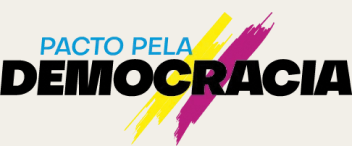
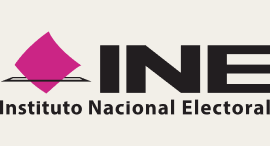
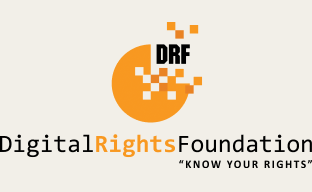
The 2024 elections projects featured in here would not have been possible without the generous support of these funders.
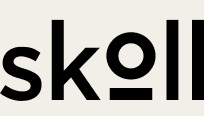


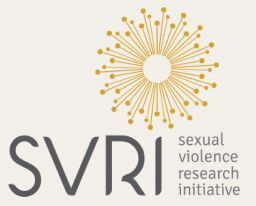
Footnotes
References
Authors
Words by
Jenna Sherman, MPH, is a Program Manager for Meedan’s Digital Health Lab. Her work has focused on digital health challenges across information access, maternal incarceration, and discrimination in AI. She has her MPH from the Harvard T.H. Chan School of Public Health in Social and Behavioral Sciences.
Nat Gyenes, MPH, leads Meedan’s Digital Health Lab. She received her masters in public health from the Harvard T. H. Chan School of Public Health, with a focus on equitable access to health information and human rights. She is a lecturer at Harvard University on the topic of health, digital media and human rights.
Megan runs Meedan’s Health Desk initiative as Senior Program Manager. She has worked for news outlets in Canada and the US, and holds a Peabody Award for her work on Netflix’s Patriot Act series. She has a Master of Science from the Columbia Journalism School.






